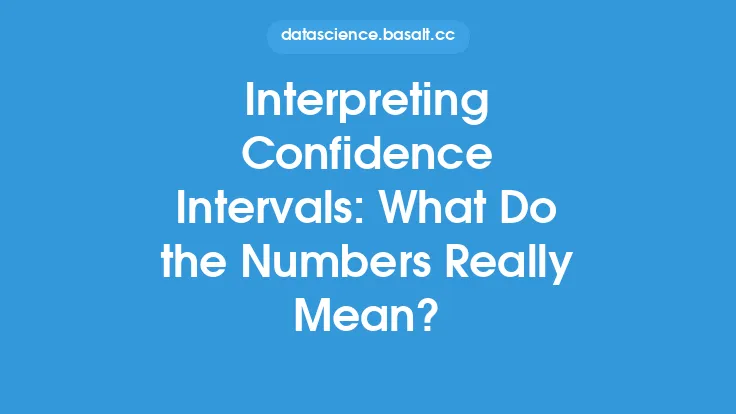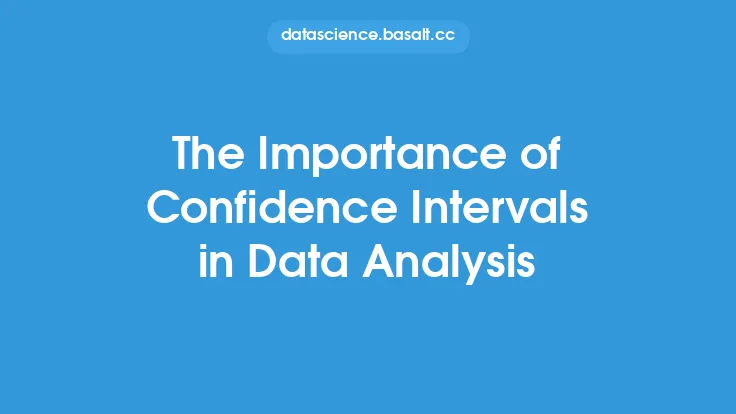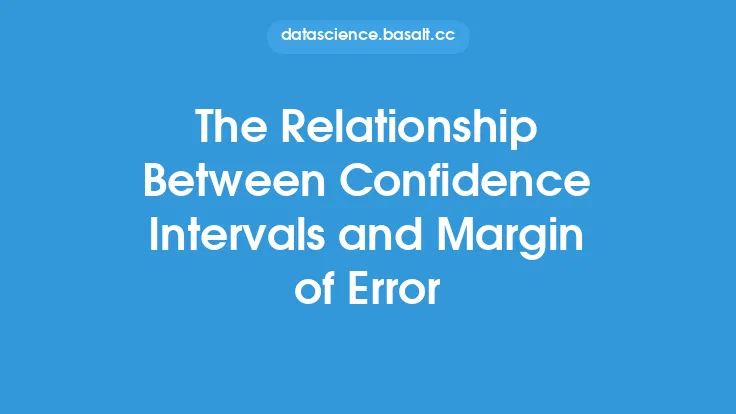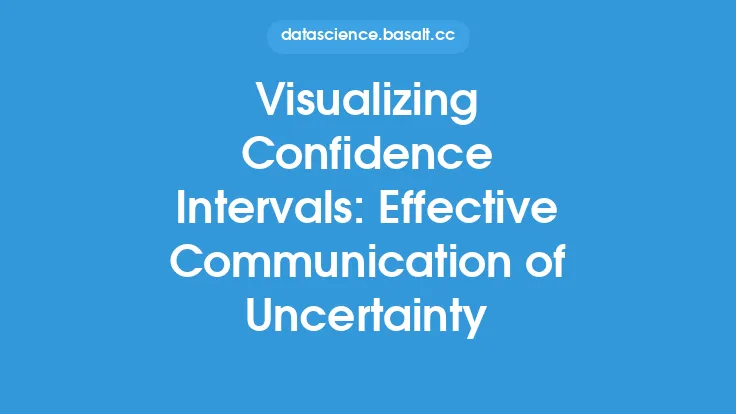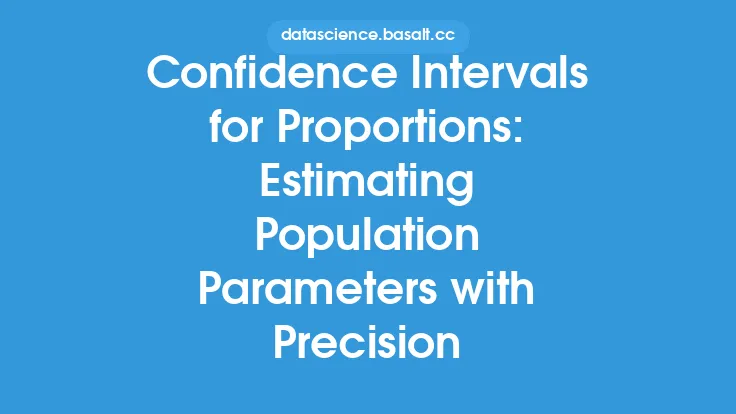Confidence intervals are a fundamental concept in statistics, used to estimate population parameters and provide a range of values within which the true parameter is likely to lie. However, despite their widespread use and importance, there are several common misconceptions about confidence intervals that can lead to misinterpretation and misuse. In this article, we will explore these misconceptions and set the record straight, providing a clear understanding of what confidence intervals represent and how they should be used.
What Confidence Intervals Represent
One of the most common misconceptions about confidence intervals is that they represent the probability that the true parameter lies within the interval. This is not entirely accurate. A confidence interval represents the range of values within which we expect the true parameter to lie, with a certain level of confidence. The confidence level, typically denoted as 1 - α, represents the proportion of times that the interval would contain the true parameter if we were to repeat the sampling process many times. For example, a 95% confidence interval means that if we were to repeat the sampling process 100 times, we would expect the interval to contain the true parameter 95 times.
The Role of Sampling Distributions
Another misconception is that confidence intervals are based on the distribution of the sample data. While it is true that the sample data are used to construct the confidence interval, the interval itself is based on the sampling distribution of the statistic. The sampling distribution represents the distribution of the statistic if we were to repeat the sampling process many times, and it is this distribution that is used to construct the confidence interval. The standard error, which is a measure of the variability of the sampling distribution, plays a critical role in determining the width of the confidence interval.
Confidence Intervals and Hypothesis Testing
There is often confusion between confidence intervals and hypothesis testing. While both concepts are related, they serve different purposes. Hypothesis testing is used to determine whether a null hypothesis can be rejected, based on the sample data. Confidence intervals, on the other hand, provide a range of values within which the true parameter is likely to lie. It is possible to construct a confidence interval that does not contain the null hypothesis value, yet still fail to reject the null hypothesis. This occurs when the confidence interval is wide, indicating a high level of uncertainty, and the null hypothesis value lies just outside the interval.
The Impact of Sample Size
The sample size has a significant impact on the width of the confidence interval. As the sample size increases, the standard error decreases, resulting in a narrower confidence interval. This is because a larger sample size provides more information about the population parameter, allowing for a more precise estimate. However, it is important to note that increasing the sample size beyond a certain point may not necessarily lead to a significant reduction in the width of the confidence interval. This is because the law of diminishing returns applies, and the marginal benefit of increasing the sample size decreases as the sample size gets larger.
Common Mistakes in Interpreting Confidence Intervals
There are several common mistakes that are made when interpreting confidence intervals. One of the most common mistakes is to assume that the confidence interval represents the probability that the true parameter lies within the interval. As mentioned earlier, this is not entirely accurate. Another mistake is to assume that a wide confidence interval indicates a lack of precision, when in fact it may simply indicate a high level of uncertainty. It is also important to note that confidence intervals are not necessarily symmetric around the point estimate, and the interval may be skewed or asymmetric.
The Importance of Assumptions
Confidence intervals are based on certain assumptions, such as normality and independence of the observations. If these assumptions are not met, the confidence interval may not be valid. For example, if the data are skewed or outliers are present, the confidence interval may be biased or inaccurate. It is therefore important to check the assumptions before constructing a confidence interval, and to use alternative methods if the assumptions are not met.
Conclusion
In conclusion, confidence intervals are a powerful tool for estimating population parameters and providing a range of values within which the true parameter is likely to lie. However, there are several common misconceptions about confidence intervals that can lead to misinterpretation and misuse. By understanding what confidence intervals represent, the role of sampling distributions, and the impact of sample size, we can use confidence intervals effectively and avoid common mistakes. It is also important to be aware of the assumptions underlying confidence intervals and to use alternative methods if these assumptions are not met. By setting the record straight on these common misconceptions, we can ensure that confidence intervals are used correctly and provide accurate and reliable estimates of population parameters.
